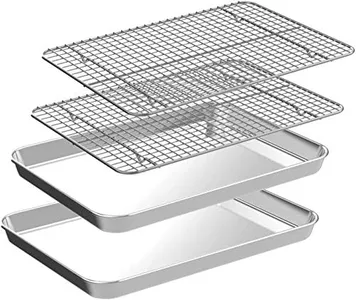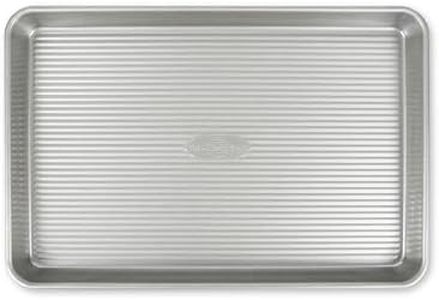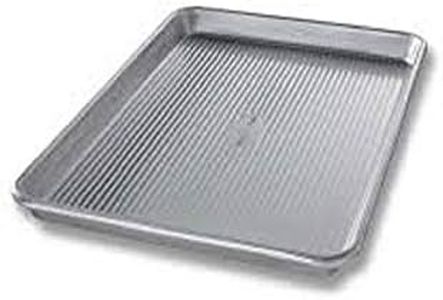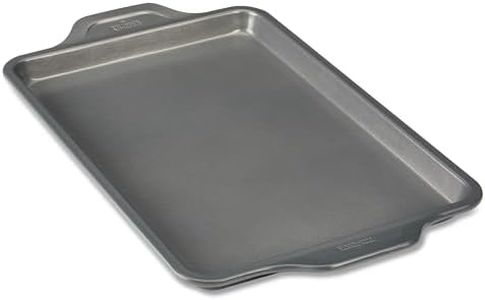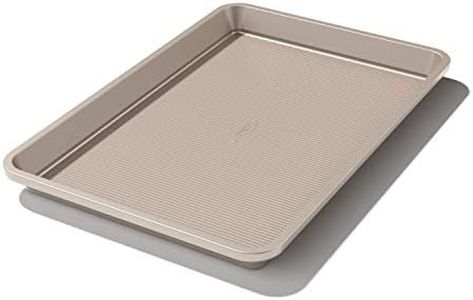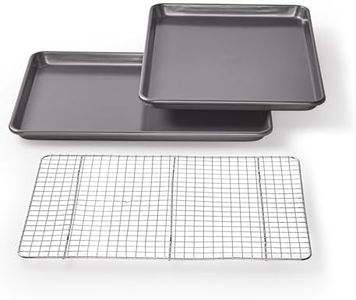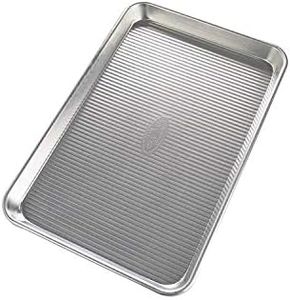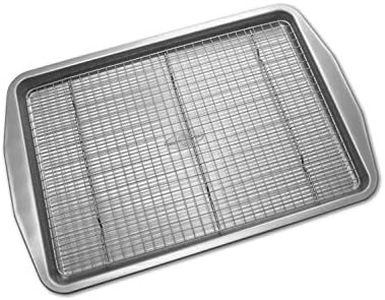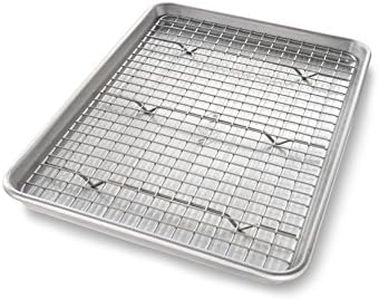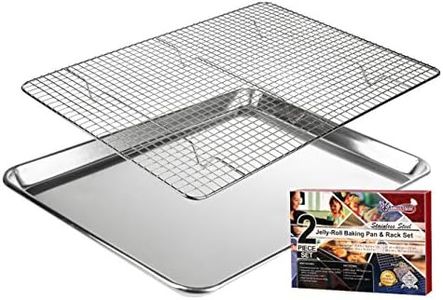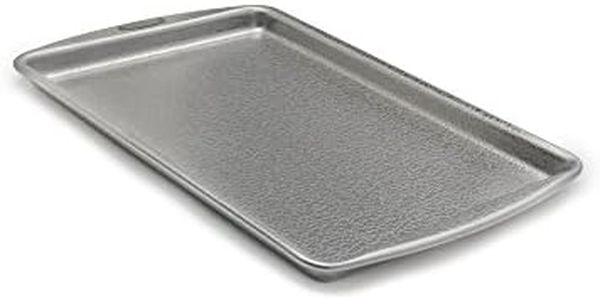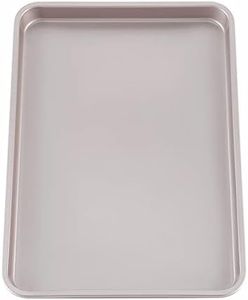We Use CookiesWe use cookies to enhance the security, performance,
functionality and for analytical and promotional activities. By continuing to browse this site you
are agreeing to our privacy policy
10 Best Jelly Roll Pans
From leading brands and best sellers available on the web.Buying Guide for the Best Jelly Roll Pans
Choosing the right jelly roll pan can make baking easier and more enjoyable. A jelly roll pan is a flat, rectangular baking pan with sides, commonly used for baking sponge cakes, cookies, roasting vegetables, and more. When selecting a jelly roll pan, focus on features that match what you bake most often, your kitchen space, and how easy you want cleanup to be. Understanding each key specification will help you select a pan that fits seamlessly into your cooking habits.SizeSize refers to the length and width of the pan, which determines how much food you can bake at once and whether it fits in your oven. Typical sizes range from 10x15 inches to 12x17 inches. Smaller pans are great for baking in compact ovens or for smaller batches, while larger pans are best for bigger recipes or making thin cakes, like those used for jelly rolls. Think about the recipes you like to make and measure your oven to ensure a comfortable fit.
MaterialThe material of a jelly roll pan affects how evenly it heats and how durable it is. Common materials include aluminum, stainless steel, and nonstick-coated metals. Aluminum pans heat up quickly and bake evenly but may bend or stain, while stainless steel pans are heavier and resist rust but can bake less evenly. Nonstick-coated pans make cleanup easy and reduce sticking, but the coating can wear over time. Choose the material based on the type of baking you do, how much you value easy cleaning, and whether you need a pan for heavy use.
Rim/Sides HeightThe height of the sides determines what types of food you can cook without spills. Jelly roll pans typically have sides about 1 inch high. Shallower sides are great for cookies and jelly roll cakes that need to slide out easily, while slightly higher sides are better for roasting or baking foods with more liquid. Choose based on whether you need to contain liquids or simply want easy access to baked goods.
Nonstick SurfaceNonstick surfaces help baked goods release effortlessly and make cleaning easier. Some pans have a special coating that prevents food from sticking, while others are uncoated. If you hate scrubbing or often bake sticky recipes, a nonstick surface can be very helpful. However, these coatings can scratch or fade, so consider if you are gentle with kitchenware or tend to use metal utensils.
Warp ResistanceWarp resistance is a pan’s ability to stay flat and not twist or bend at high baking temperatures. Cheaper or thin pans can warp, making baking uneven or spilling batter. Look for pans described as heavy-gauge or reinforced if you plan on using them often or with high heat. If you only bake occasionally or at lower temperatures, basic pans may be sufficient.
Ease of CleaningEase of cleaning refers to how simple it is to wash the pan after use. Smooth, nonstick pans tend to be the easiest, while pans with textured surfaces or tight corners may need more scrubbing. Some are dishwasher-safe, making cleanup hands-off. Consider your routine—do you prefer popping things in the dishwasher, or is hand washing the norm for you?
